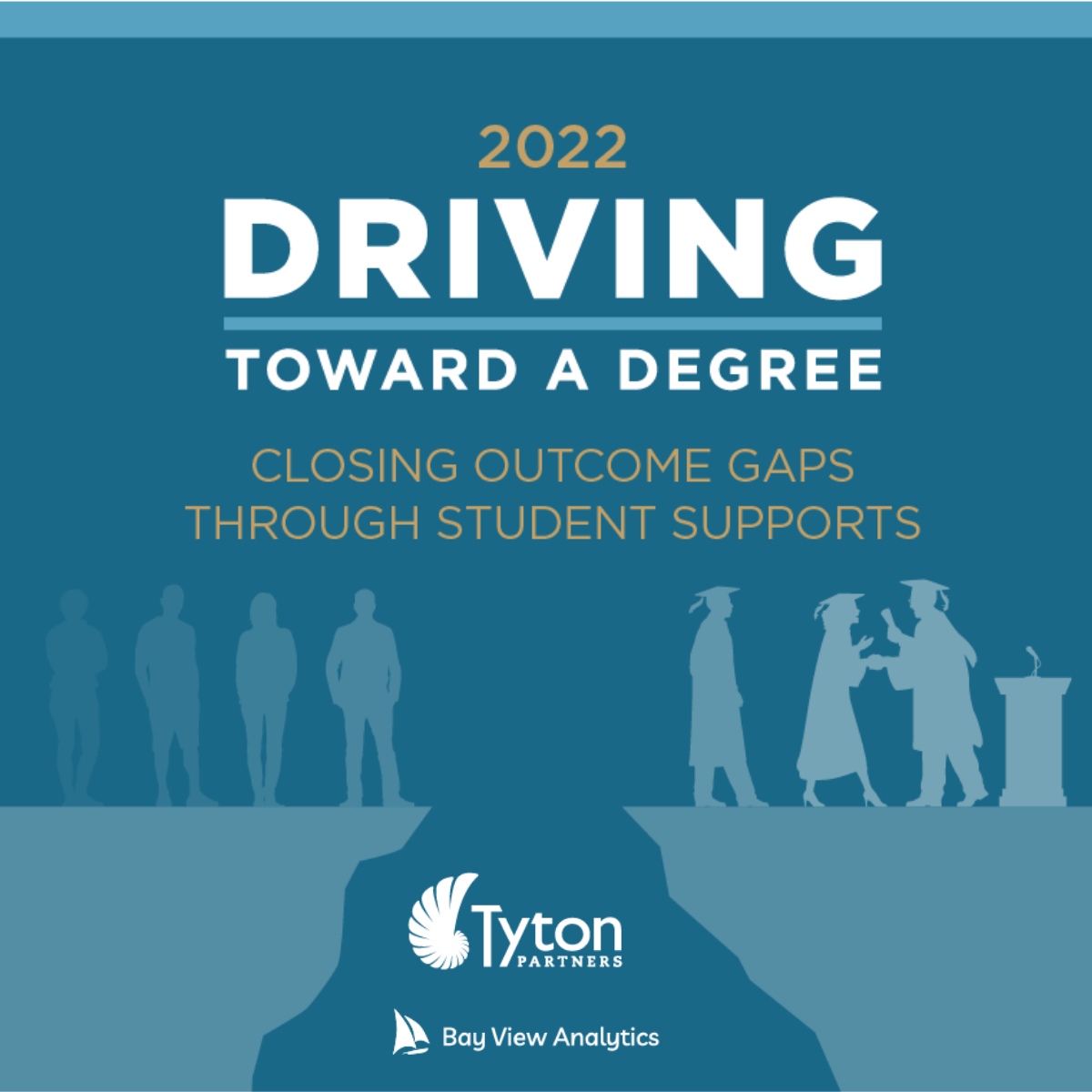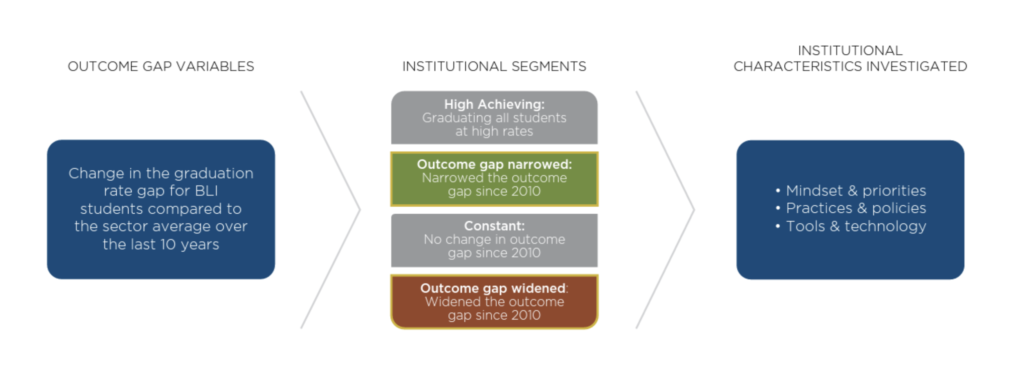
Driving Toward a Degree: Closing Outcome Gaps Through Student Supports

Driving Towards a Degree is a research collaborative which helps institutions evolve their student supports.
In this year’s research, we designed a methodology to measure progress towards equitable academic outcomes by race and ethnicity, represented by data on how the needs of Black, Latinx, Indigenous (BLI) groups, and students with financial needs differ from those of White students. The data also reflects how the scaled implementation of certain advising practices and technologies plays a role in closing gaps in graduation rates by race and ethnicity.
We frame our work around an academic outcome gap using the methodology we developed to include historically underserved minorities in higher education as part of the norm (rather than solely White students).

Leveraging this new segmentation based on outcome gaps, we interrogate mindset, practice, and technology implementation data from Driving Towards a Degree to see if we can identify key areas of investment that may drive differences in progress towards closing graduation rate outcome gaps for Black and Latinx students.
We find that mindset – i.e., attitudes about commitment to equity –is consistent across the outcome gap narrowed versus outcome gap widened institutions in our sample set. Both types of institutions believe equity is a priority in the design of their advising practices and believe that technology has a role in creating more equitable academic outcomes for BLI students and those with financial need.
In contrast, we find that institutions with narrowed outcome gaps have statistically significant differences in caseload numbers (and reported caseload manageability), and deployment of select advising technologies compared to institutions that widened their racial and ethnic outcomes gaps over the last decade. Specifically, the implications of these findings for the advising field are far-reaching:
- Caseload size is lower, and manageability is higher at institutions where the race/ethnicity graduation rate gap has improved in the last 10 years. When caseloads are high, it limits the scalability of certain effective advising practices, such as mandatory advising. And, when caseloads are high during peak season, professional advisors spend less time with each student during advising sessions.
- Scaled implementation of caseload management technology and integration solutions is more prevalent at “outcome gap narrowed institutions” and “outcome gap widened institutions” (controlling for full-time equivalent enrollments of over 5,000). These findings make sense given caseloads are higher at larger institutions and rely on several technologies to support advising processes.
Our work has many implications for the advising ecosystem:
- First and foremost, we believe that institutions need to track their racial and ethnic graduation rate outcome gaps over time in a way that includes BLI students in the norm and then monitor this figure closely because, ultimately, you cannot change what you do not measure. We posit that institutional leadership needs to designate an accountable party to make closing the outcome gap (or in some cases, reversing the widening of outcome gaps) part of their institutional strategic plans.
- Technology solution providers can support the pursuit of equity in academic outcomes for BLI students by making data on student identities (and thereby needs) more easily accessible to support providers so they can more meaningfully engage students with services customized for their experiences.
- Finally, policymakers should pay attention to which institutions are closing academic outcome gaps for BLI students to find ways to scale their impact through funding or directing students of color to those institutions by publicizing their success.